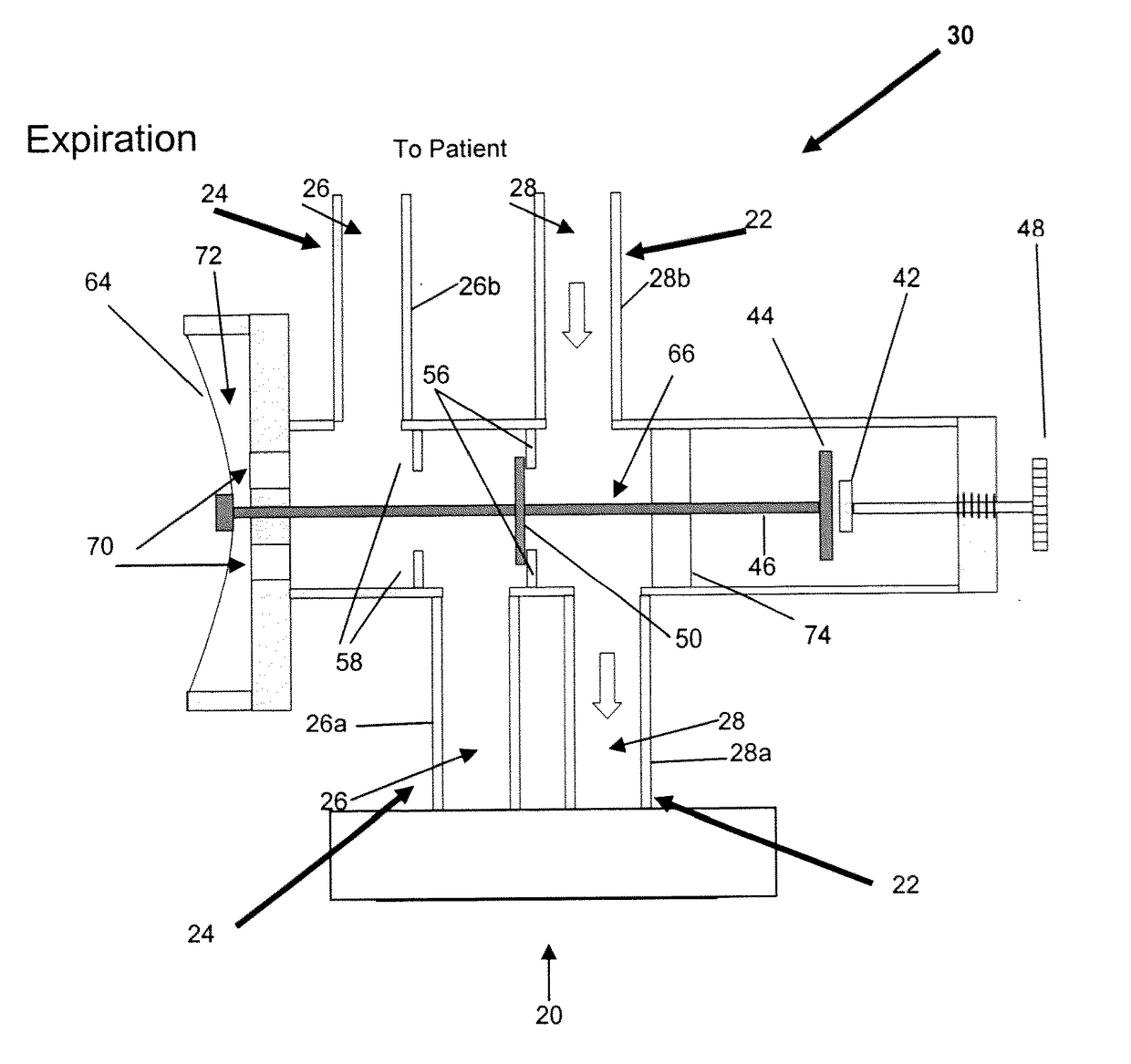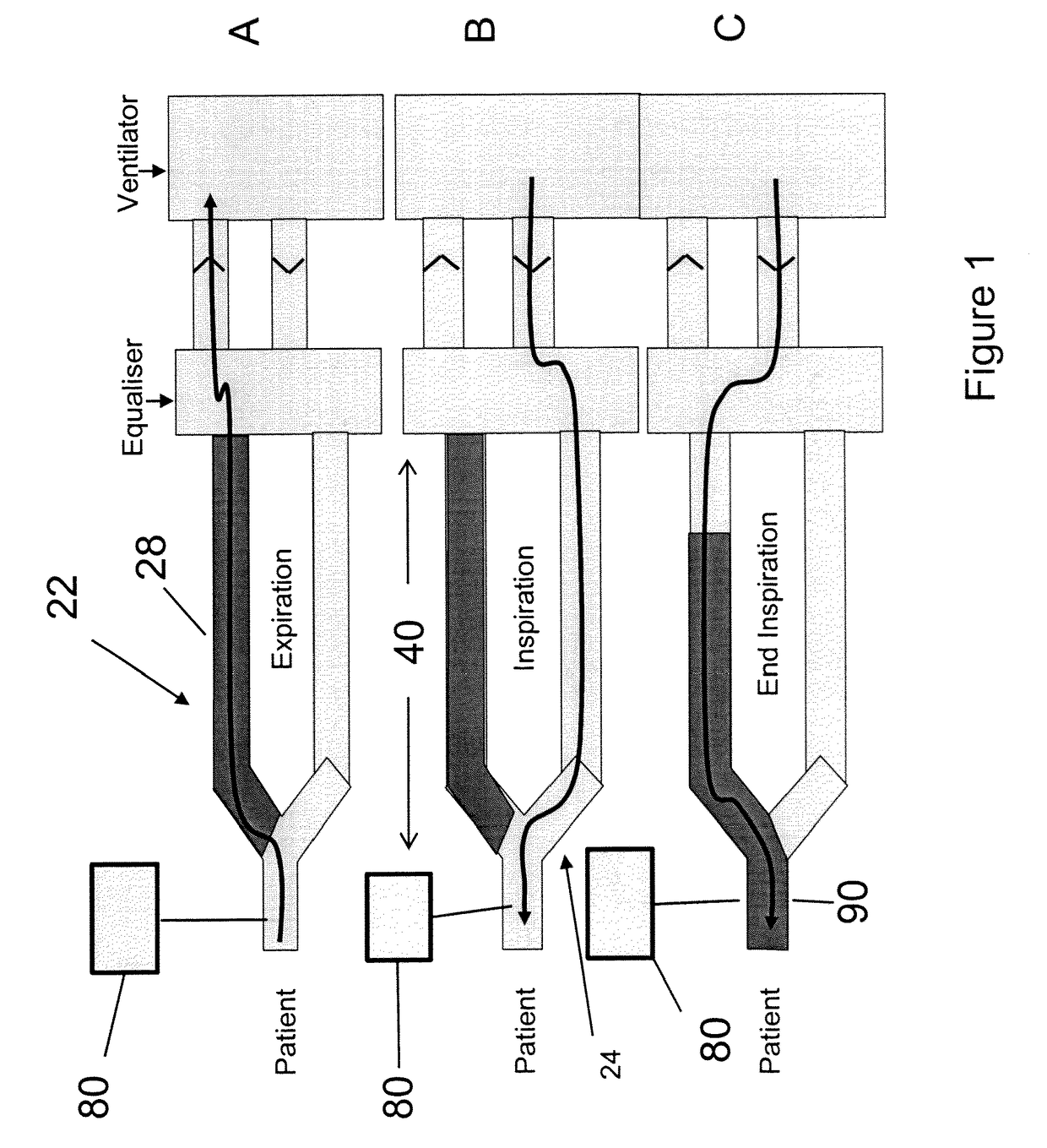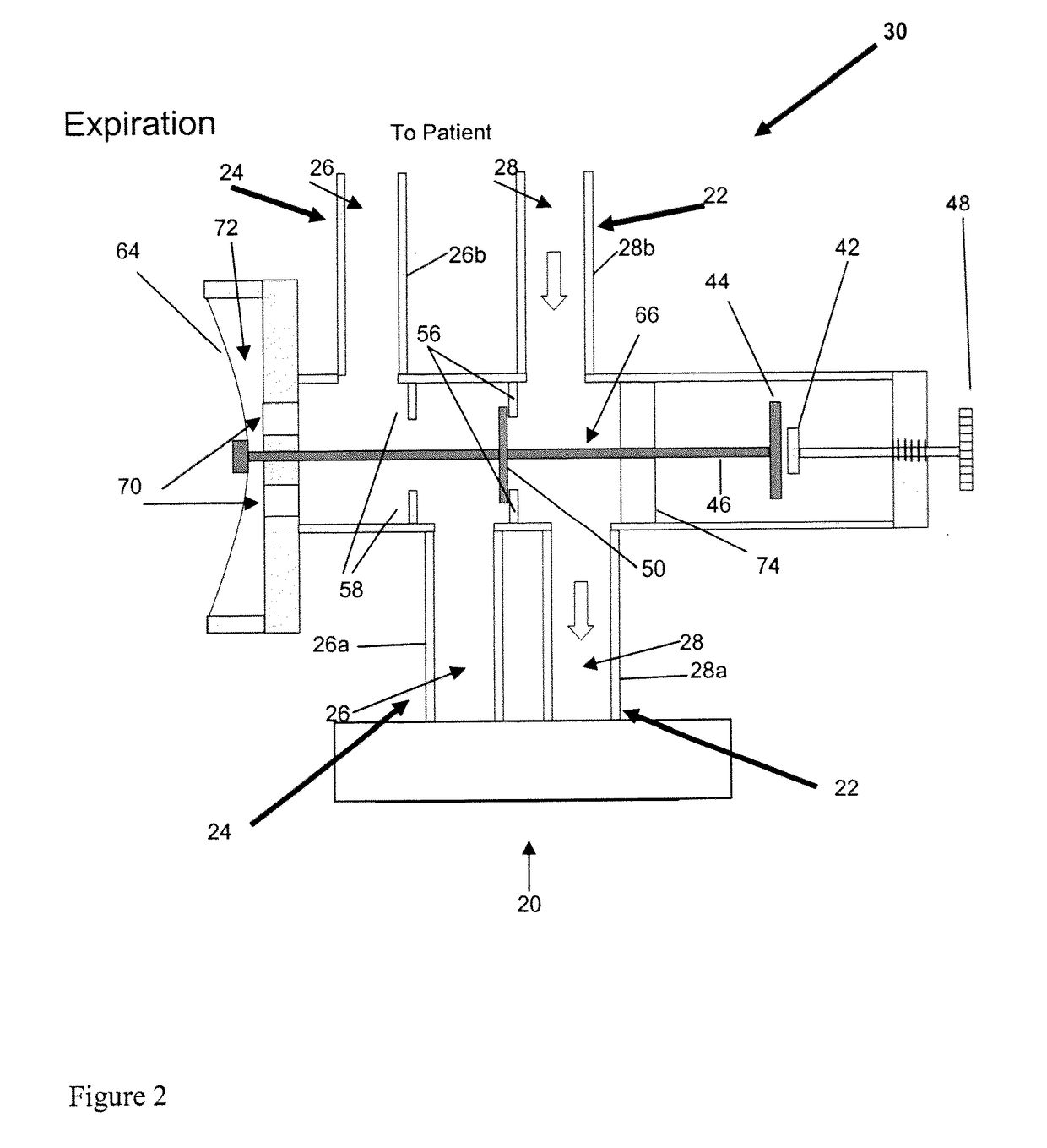Non-invasive arterial blood gas determination
a technology of arterial blood and gas, which is applied in the field of non-invasive arterial blood gas determination, can solve the problems of large differences, high risk of pediatric patients, and large health care resources consumed by drawing, transporting, and analyzing samples, and achieves the effect of minimizing the gradien
- Summary
- Abstract
- Description
- Claims
- Application Information
AI Technical Summary
Benefits of technology
Problems solved by technology
Method used
Image
Examples
example 1
[0059]Study Subjects: 8 Yorkshire newborn pigs, 3-4 weeks of age with a mean weight of 3.6 kg (table 1) in an animal operating room setting. Eight newborn Yorkshire pigs with various combinations of acquired viral pneumonia, persistent patent ductus arteriosus, and patent foramen ovale were mechanically ventilated via a partial rebreathing circuit to implement end-inspiratory rebreathing. Arterial blood was sampled from an indwelling arterial catheter and tested for PaCO2. A variety of alveolar ventilations resulting in different combinations of end-tidal PCO2 (30 to 50 mmHg) and PO2 (35 to 500 mmHg) were tested for differences between PETCO2 and PaCO2 (PET-aCO2).
[0060]Results: The PET-aCO2 of all samples was (mean±1.95SD) 0.4±2.7 mmHg. The probability of obtaining this level of agreement between PETCO2 and PaCO2 by chance is <0.0001.
[0061]Observations: Rebreathing at end-inspiration reduces PET-aCO2 to a clinically useful range in a ventilated animal model with lung pathology and c...
PUM
 Login to View More
Login to View More Abstract
Description
Claims
Application Information
 Login to View More
Login to View More - R&D
- Intellectual Property
- Life Sciences
- Materials
- Tech Scout
- Unparalleled Data Quality
- Higher Quality Content
- 60% Fewer Hallucinations
Browse by: Latest US Patents, China's latest patents, Technical Efficacy Thesaurus, Application Domain, Technology Topic, Popular Technical Reports.
© 2025 PatSnap. All rights reserved.Legal|Privacy policy|Modern Slavery Act Transparency Statement|Sitemap|About US| Contact US: help@patsnap.com



